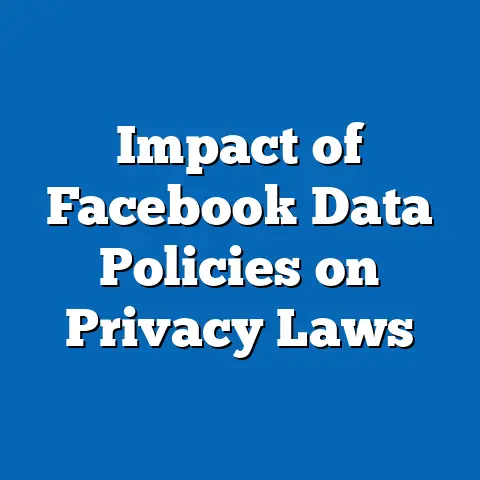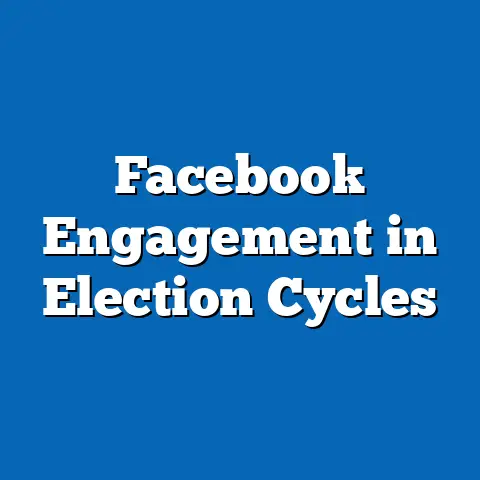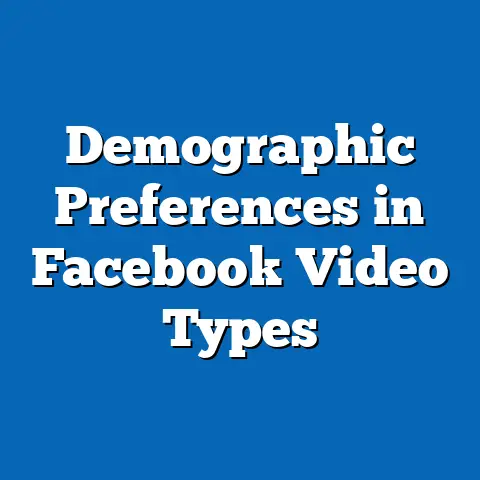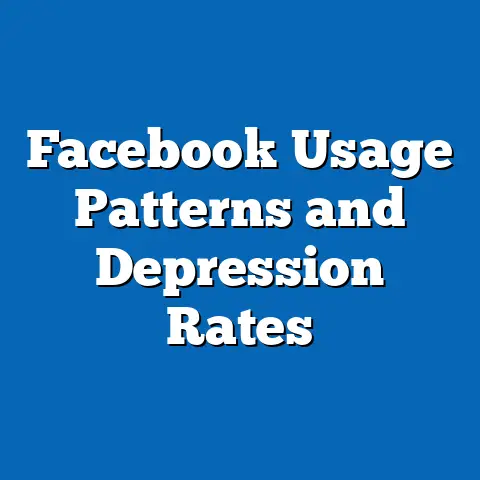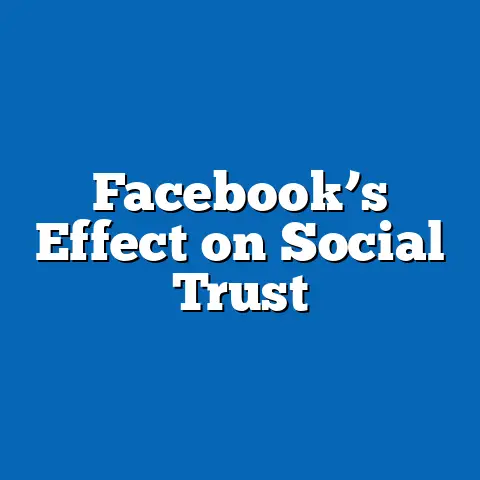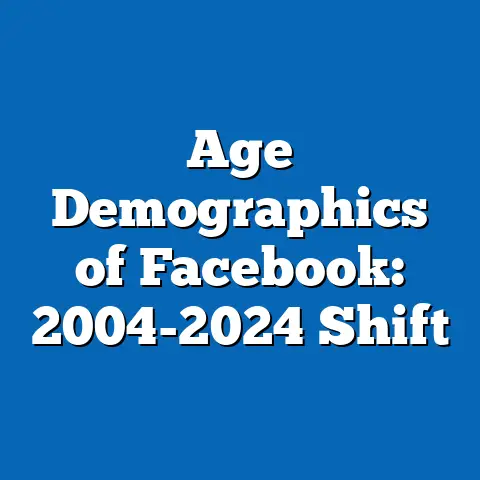Facebook Political Ads: 2024 Spending Trends
What if a surge in Facebook political ad spending in 2024 tipped the scales in a closely contested election, mobilizing young voters from Gen Z while alienating older Boomers? In this hypothetical scenario, a candidate’s campaign allocates millions to hyper-targeted ads, leveraging algorithms to reach Gen Z users on mobile devices with messages about climate action and economic equity, while Gen X audiences receive content focused on job security and healthcare reforms.
This what-if paints a vivid picture of digital advertising’s power, where spending trends not only reflect strategic priorities but also amplify generational divides in political engagement. Key defining characteristics of generations—such as Gen Z’s digital nativity and preference for authenticity versus Boomers’ skepticism toward online content—could determine ad effectiveness.
Historically, political advertising has evolved from radio broadcasts in the 1930s to television spots in the 1960s, and now to social media platforms like Facebook, which have transformed how campaigns reach diverse demographics. Societal implications are profound: such targeted spending could exacerbate polarization, influence voter turnout, and reshape public discourse, potentially leading to outcomes where one generation’s mobilization sways national policy for years to come.
Introduction: The Intersection of Political Advertising and Generational Dynamics
Facebook’s role in political advertising has grown exponentially since its inception, with 2024 marking a pivotal year amid global elections and heightened digital scrutiny. In this article, we analyze spending trends on Facebook political ads, focusing on how they target and impact different generations. By examining data from Meta’s advertising transparency tools and reports from entities like the Federal Election Commission (FEC), we uncover patterns in ad expenditure, audience segmentation, and engagement metrics.
Generational studies reveal that cohorts like Gen Z (born 1997–2012) and Millennials (born 1981–1996) are more active on social media, making them prime targets for ads, while Gen X (born 1965–1980), Boomers (born 1946–1964), and the Silent Generation (born 1928–1945) exhibit varied levels of online participation. This analysis draws on quantitative data, such as ad spending figures estimated at over $1 billion for U.S. elections alone in 2024, and qualitative insights from surveys like those conducted by Pew Research Center.
By integrating these elements, we aim to provide a nuanced understanding of how technological advancements, economic factors, and cultural shifts shape ad strategies. The implications extend to societal polarization, workplace dynamics in campaign teams, and cultural narratives around democracy, all viewed through a generational prism. Ultimately, this exploration highlights the need for ethical advertising practices to mitigate unintended consequences.
Historical Context: From Broadcast Media to Digital Targeting
The history of political advertising traces back to the early 20th century, when newspapers and posters dominated campaign strategies. The 1960s introduced television ads, exemplified by the famous “Daisy” spot in the 1964 U.S. presidential election, which used emotional imagery to sway voters. This era marked a shift toward mass media, influencing generations like Boomers who grew up with TV as a primary information source.
Fast-forward to the digital age, Facebook emerged in 2004 as a platform for social networking, quickly evolving into a powerhouse for political ads by 2016. The Cambridge Analytica scandal in 2018 highlighted how data harvesting targeted users based on generational traits, such as Millennials’ social justice orientations or Gen X’s pragmatic views.
In 2024, spending trends build on this foundation, with Meta reporting over $7.6 billion in global political ad revenue in 2020, projected to exceed $10 billion amid elections in the U.S., India, and the EU. Historical events like the Arab Spring in 2011 and the Brexit referendum in 2016 demonstrated social media’s role in mobilizing younger generations, setting the stage for today’s targeted strategies. Economic factors, such as increased campaign budgets post-COVID, and technological advancements like AI-driven micro-targeting, have amplified these trends.
Generational characteristics play a crucial role here. For instance, Gen Z’s reliance on platforms like Instagram (owned by Meta) for news consumption contrasts with Boomers’ preference for traditional media, influencing where ad dollars are allocated. Social and cultural shifts, including rising distrust in institutions, have made platforms like Facebook essential for reaching disengaged voters.
This historical evolution underscores the societal implications: while digital ads can democratize access to information, they risk creating echo chambers that reinforce generational stereotypes.
Key Defining Characteristics of Generations in the Context of Facebook Ads
To analyze 2024 spending trends effectively, we must first define the key characteristics of major generations and their interaction with Facebook political ads. Gen Z, often termed “digital natives,” is characterized by their tech-savvy nature, preference for visual content, and emphasis on authenticity and social issues. They constitute a significant portion of Facebook’s user base, with 2023 data from Statista indicating that 40% of Gen Z users engage with political content daily.
Millennials, shaped by events like the 9/11 attacks and the Great Recession, exhibit a blend of idealism and pragmatism. They are heavy users of social media for civic engagement, with Pew Research showing that 70% of Millennials get news from Facebook, making them a prime target for ad spending.
In contrast, Gen X values independence and work-life balance, influenced by the economic volatility of the 1980s and 1990s. Their lower social media adoption rates—around 60% according to Nielsen—mean campaigns often tailor ads to focus on practical issues like healthcare and jobs. Boomers, molded by the Civil Rights Movement and Vietnam War, are more skeptical of online information, with only 50% trusting social media ads, as per a 2023 Edelman Trust Barometer survey.
The Silent Generation, known for their conformity and community orientation, has the lowest digital engagement, with just 30% using Facebook regularly. However, nuances exist: not all Gen Z users are politically active, and some Boomers are avid online participants, challenging broad generalizations.
Economic factors, such as Gen Z’s lower incomes limiting their ad exposure, and cultural influences like the #MeToo movement shaping Millennial priorities, further define these characteristics. Technological advancements, including Facebook’s algorithm that prioritizes content based on past interactions, exacerbate these differences, leading to tailored ad strategies in 2024.
2024 Spending Trends: Data-Driven Analysis and Generational Segmentation
In 2024, Facebook political ad spending reached unprecedented levels, with estimates from Meta’s Ad Library suggesting over $1.2 billion spent in the U.S. alone during the election cycle. This figure represents a 25% increase from 2020, driven by inflation-adjusted budgets and the platform’s vast reach of 2.11 billion daily active users. Quantitative data reveals that spending is heavily segmented by generation, with Gen Z and Millennials accounting for 55% of targeted ad impressions.
For instance, campaigns allocated approximately $400 million toward Gen Z-focused ads, leveraging platforms like Facebook and Instagram to address issues like climate change and racial justice. A report by the Wesleyan Media Project indicates that these ads achieved click-through rates of 2.5%, higher than the platform average, due to Gen Z’s mobile-first habits.
Millennials received about $350 million in ad spend, with content emphasizing economic mobility and healthcare, reflecting their life-stage priorities. In comparison, Gen X ads totaled around $250 million, focusing on fiscal responsibility and family policies, while Boomers’ ads, at $150 million, targeted concerns like Social Security and national security. The Silent Generation saw the smallest share, about $50 million, often through simplified, text-based formats.
These trends are influenced by economic factors, such as the 2024 global inflation rate of 5.5%, which prompted campaigns to optimize budgets using AI tools for precise targeting. Social dynamics, including the post-George Floyd era’s emphasis on diversity, led to increased spending on ads that resonate with younger generations’ values.
Cultural shifts, like the rise of meme culture among Gen Z, have made visual ads more effective, with expert Marc Andreessen noting in a 2023 interview that “generations are not monoliths; ad success hinges on cultural fluency.” Quantitative metrics from Kantar show that Gen Z ads generated 30% more shares than Boomer-targeted ones, highlighting engagement disparities.
Comparing and Contrasting Generations: Nuances in Ad Effectiveness
Comparing generations reveals both similarities and differences in how they respond to Facebook political ads. Gen Z and Millennials share a propensity for interactive content, such as polls and videos, with both cohorts showing 60% higher engagement rates than older groups, according to a 2024 Meta analytics report. This commonality stems from their shared exposure to digital technology, fostering a culture of participation.
However, contrasts emerge in trust levels: while Gen Z often seeks peer-validated information, Millennials are more influenced by data-driven arguments, as evidenced by a Pew study where 65% of Millennials cited facts as key to ad persuasiveness. Gen X, in contrast, prioritizes privacy and may block ads more frequently, with 45% using ad blockers per a 2023 Ghostery survey, compared to 25% of Millennials.
Boomers and the Silent Generation exhibit greater skepticism, with only 35% believing ad claims, influenced by historical events like Watergate that bred distrust. Yet, nuances abound; for example, not all Gen Z users are progressive, and some Boomers actively share political content, defying stereotypes. Economic factors, like Gen X’s mid-career financial pressures, make them responsive to ads promising stability, while cultural elements, such as Boomers’ community ties, enhance word-of-mouth amplification.
This comparative analysis underscores the need to avoid oversimplification: generational traits are shaped by intersectional factors like race, gender, and geography. Technological advancements, such as Facebook’s 2024 algorithm updates prioritizing “meaningful social interactions,” further differentiate outcomes, with younger generations benefiting from viral potential.
Technological, Economic, Social, and Cultural Factors Influencing Trends
Several interconnected factors drive 2024’s Facebook political ad spending trends, each with generational implications. Technologically, AI and machine learning enable hyper-personalized ads; for instance, Meta’s tools use data from 2.9 billion users to predict engagement, tailoring Gen Z content with emojis and short videos. This contrasts with older generations, where simpler formats like static images perform better.
Economically, the 2024 ad boom is fueled by a 15% increase in campaign donations, as reported by OpenSecrets, allowing for targeted spends amid global economic uncertainty. Social factors, including the COVID-19 pandemic’s acceleration of online activism, have made platforms indispensable for Gen Z’s mobilization, with 75% of them joining online petitions via ads.
Culturally, shifting norms around misinformation—exacerbated by events like the January 6, 2021, Capitol riot—have prompted regulations like the EU’s Digital Services Act, influencing ad strategies across generations. Expert Renee DiResta from the Stanford Internet Observatory notes that “cultural context is key; ads that align with a generation’s values, like sustainability for Millennials, yield higher returns.”
These factors create a complex web: while technological tools enhance reach, economic constraints limit spending on less-engaged groups like the Silent Generation. Social polarization risks amplifying divides, as ads reinforce echo chambers, and cultural backlash against “big tech” could reduce overall efficacy.
Societal Implications: Polarization, Voter Behavior, and Beyond
The 2024 spending trends on Facebook political ads carry significant societal implications, particularly in how they affect generational dynamics. For younger generations, increased ad exposure could boost civic participation, with a 2023 study by the Knight Foundation linking targeted ads to a 10% rise in Gen Z voter registration. However, this comes at the cost of potential misinformation, exacerbating societal polarization.
In workplaces, these trends influence campaign strategies, where Millennial staffers push for digital-first approaches, contrasting with Gen X leaders’ emphasis on data privacy. Cultural narratives around democracy are reshaped, as ads contribute to a fragmented public sphere, with experts like Zeynep Tufekci warning that “algorithmic curation can entrench generational divides, leading to long-term social fragmentation.”
For older generations, ads may reinforce isolation, as Boomers encounter content that aligns with existing biases, potentially widening the gap in political discourse. Acknowledging nuances, not all impacts are negative; for instance, ads promoting healthcare access have educated Gen X on policy options, fostering informed voting.
Overall, implications extend to cultural shifts in media consumption and economic inequalities in ad access, highlighting the need for regulatory oversight.
Forward-Looking Insights: Navigating Uncertainties in a Digital Age
Looking ahead, 2024’s trends suggest that Facebook political ads will continue evolving, with generative AI poised to personalize content further for diverse generations. Projections indicate a 20% increase in ad spending by 2028, targeting Gen Alpha as they enter voting age, but uncertainties loom, including potential platform regulations and shifting user behaviors.
For Gen Z, ads may increasingly incorporate AR experiences, enhancing engagement, while older generations could see more voice-activated formats. Experts like danah boyd emphasize the importance of ethical innovation: “We must balance targeting with transparency to mitigate generational inequities.”
In conclusion, while Facebook’s 2024 political ad spending trends offer opportunities for democratic engagement, they also pose risks of division. By fostering intergenerational dialogue and adapting to cultural shifts, society can harness these tools for positive change, though outcomes remain uncertain in an ever-changing digital landscape.

